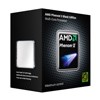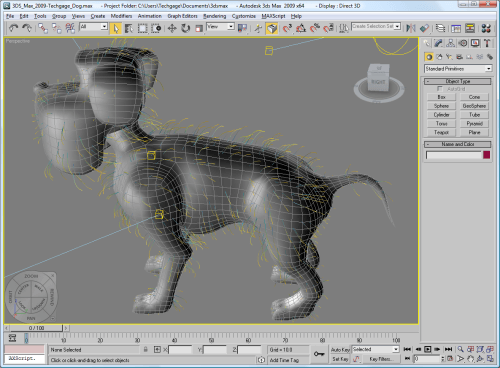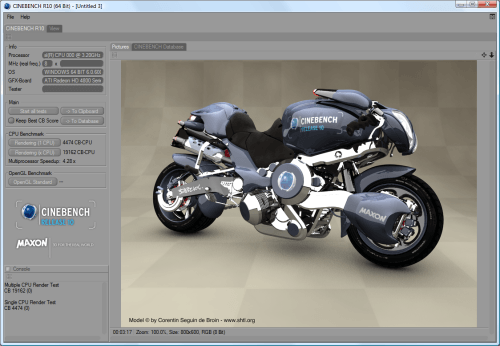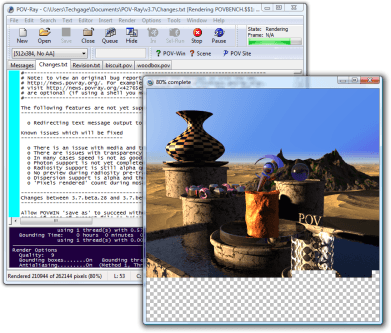- Qualcomm Launches Snapdragon 4 Gen 2 Mobile Platform
- AMD Launches Ryzen PRO 7000 Series Mobile & Desktop Platform
- Intel Launches Sleek Single-Slot Arc Pro A60 Workstation Graphics Card
- NVIDIA Announces Latest Ada Lovelace Additions: GeForce RTX 4060 Ti & RTX 4060
- Maxon Redshift With AMD Radeon GPU Rendering Support Now Available
Phenom II X6 1090T – AMD Enters the Six-Core Arena

In March, it was Intel’s turn, and this month, it’s AMD’s. That’s right, we’re at the point when Phenom II X6’s are hitting the market and giving consumers a much less expensive six-core CPU to chose from. We’re taking a look at AMD’s top-end offering, the 1090T BE, and also a brief look at the company’s new 890FX chipset.
Page 4 – Workstation: Autodesk 3ds Max, Cinebench, POV-Ray
Autodesk’s 3ds Max is without question an industry standard when it comes to 3D modeling and animation, with DreamWorks, BioWare and Blizzard Entertainment being a few of its notable users. It’s a multi-threaded application that’s designed to be right at home on multi-core and multi-processor workstations or render farms, so it easily tasks even the biggest system we can currently throw at it.
For our testing, we use two project files that are designed to last long enough to find any weakness in our setup and also allows us to find a result that’s easily comparable between both motherboards and processors. The first project is a dog model included on recent 3ds Max DVD’s, which we infused with some Techgage flavor.
Our second project is a Bathroom scene that makes heavy use of ray tracing. Like the dog model, this one is also included with the application’s sample files DVD. The dog is rendered at an 1100×825 resolution, while the Bathroom is rendered as 1080p (1920×1080).

To see the 1090T fall just behind the quad-core Core i7-975 Extreme Edition isn’t too much of a surprise, as HyperThreading generally seems to help in 3D rendering tests, especially if ray-tracing is is being tackled. Still, the fact remains that we’re seeing great performance from a $300 AMD CPU when comparing to what was a $999 CPU from Intel mere months ago.
Cinebench R10
Like 3DS Max, Cinema 4D is another popular cross-platform 3D graphics application that’s used by new users and experts alike. Its creators, Maxon, are well aware that their users are interested in huge computers to speed up rendering times, which is one reason why they released Cinebench to the public.
Cinebench R10 is based on the Cinema 4D engine and the test consists of rendering a high-resolution model of a motorcycle and gives a score at the end. Like most other 3D applications on the market, Cinebench will take advantage of as many cores as you can throw at it.

Performance similar to what we saw with 3ds Max continues here, though the Lynnfield-based Core i7-870 manages to come very close to beating AMD’s latest and greatest.
POV-Ray 3.7
Similar to Cinebench, the “Persistence of Vision Ray Tracer” is as you’d expect, a ray tracing application that also happens to be cross-platform. It allows you to take your environment and models and apply a ray tracing algorithm, based on a script you either write yourself or borrow from others. It’s a free application and has become a standard in the ray tracing community and some of the results that can be seen are completely mind-blowing.
The official version of POV-Ray is 3.6, but the 3.7 beta unlocks the ability to take full advantage of a multi-core processor, which is why we use it in our testing. Applying ray tracing algorithms can be extremely system intensive, so this is one area where multi-core processors will be of true benefit.
For our test, we run the built-in benchmark, which delivers a simple score (Pixels-Per-Second) the the end. The higher, the better. If one score is twice another, it does literally mean it rendered twice as fast.

The 1090T’s performance impressed me here, because generally speaking, it’s Intel’s processors that excel so well at ray-tracing. While the 1090T didn’t manage to come close to the multi-threading performance of Intel’s six-core, it easily blew past the quad-core Core i7-975.
Support our efforts! With ad revenue at an all-time low for written websites, we're relying more than ever on reader support to help us continue putting so much effort into this type of content. You can support us by becoming a Patron, or by using our Amazon shopping affiliate links listed through our articles. Thanks for your support!








